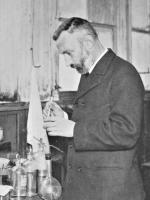| www.tmatlantic.com
Test & Soldering Equipment On-line Store |
|
D.E.V.I.C.E. (Wiki)Calculators Services |
|||||
Filter by first letter
|
Curie point (or the Curie temperature, temperature of the second-order phase transition)
In general Curie point (or the Curie temperature, temperature of the second-order phase transition) is associated with an abrupt change in the symmetry properties of a substance (for example, magnetic – in ferromagnets, electric – in ferroelectrics, crystal chemical – in ordered alloys). Named after Pierre Curie who studied this transition in a detail in ferromagnets. At a temperature (T) below the Curie point (Q) ferromagnets have spontaneous magnetization and some certain magneto-crystalline symmetry. At the Curie point (T = Q) the intensity of the thermal motion of ferromagnet atoms is sufficient to destroy its spontaneous magnetization (“magnetic order”) and change the symmetry, as a result, the ferromagnet becomes a paramagnet. In ferroelectrics and antiferroelectrics at T = Q the thermal motion of atoms reduces to zero the spontaneous ordered orientation of the electric dipoles of the elementary cells of the crystal lattice. In ordered alloys at the Curie point the degree of long-range order in the atoms (ions) arrangement of the alloy components becomes equal to zero. Thus in all cases of second-order phase transitions at T = Q some type of atomic order disappears in a substance. Closer to the Curie point there are specific changes in many physical properties (for example, heat capacity, magnetic susceptibility, etc.) occur in a substance, reaching its maximum at T = Q which is usually used to accurately determine the phase transition temperature. |
Site mapPrivacy policyTerms of Use & Store PoliciesHow to BuyShippingPayment




|

























